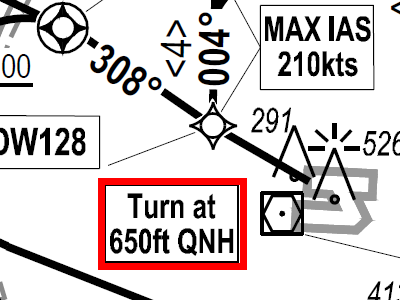It’s a Safety Requirement
Every discussion about changing anything in aviation inevitably leads to “the big S”. It’s all about SAFETY, so the discussion is over now. This is usually the stick used to beat down anything that would mean DAA or IAA needs to change something. Used like this it paints anyone that disagrees with them as anti-safety. They don’t come out and say it but of course the implication is that listening to anyone other than them will cause danger – your flight to Lanzarote is going to fall out of the sky!
So let's talk about the safety of low altitude turns
The departure tracks in use from the north runway require all aircraft to make a 30 degree right turn to the north. Were told this is a “safety requirement” and it’s usually left at that. See our Motorway in the Sky article for the details of how that turn came about and the noise problems stemming from that one change. In reality that 30 degree change often leads to more than a 30 degree turn, sometimes as much as 45 degrees and this is happening at around 400ft above the ground.
If you look at the departure chart (aka SID or Standard Instrument Departure) you’ll see “Turn at 650ft QNH”. That’s aviation speak for 650ft above sea level and the runway is around 250ft above sea level so you’re 400ft off the ground making anything up to a 45 degree turn which reduces your climb efficiency as turning is bad for climbing.

So if its a 30 degree turn on the chart what’s “up to 45 degrees” about? Many of the larger aircraft are unable to make the turn by the end of the runway as they are so heavy, slow and working so hard to climb that they have not reached 400ft by the end of the runway. That’s the point where DAA drew the 30 degree turn on the chart and by missing that turn they are off course. As a result when they finally lumber up to 400ft they have to make a bigger turn to get back on course, sometime they have to turn 40 degrees right, fly for a mile and then correct 10 degrees left. Sometimes they make the initial 30 degree turn and 1 mile later reach another waypoint that requires a second turn, this one is 60 degrees right.
So here we have the biggest aircraft that use Dublin Airport daily, the A330:
- Going transatlantic
- Full of passengers
- Full of bags
- Full of fuel
So, very heavy!
Now lumbering through 400 ft we make them turn. They just get wings-level and 30 seconds later we make them turn again – twice as much. Turning is bad for climbing and losing an engine at 400ft off the ground in a max weight A330 while in a 30 to 40 degree turn is every pilots nightmare. You will not find a pilot that will describe this as safer than climbing straight ahead.
Maybe the next time your hear “it’s a safety issue so we don’t have a choice” you’ll understand that this may not what you might call … accurate!
The truth is the 30 degree turn is not needed to comply with the regulations and the second turn of another 60 degrees has absolutely nothing to do with safety. Flying 2 miles straight ahead from take off and making only a 10 degree turn would also comply, would be much safer, and would permit 50% more flights out of Dublin Airport. What’s not to love?
The 28L missed approach
“The missed approach track for 28L has been working fine for years so why change it?” Well, as discussed in our proposal, changing that track is key to solving the noise problem created by 100% of flights turning off the planned track at 400ft above the ground. Keep in mind this does not require building new things, simply for DAA to change lines on a chart and submit it for approval to the IAA. “But the airspace to the south is complicated and would involve Weston and the military” they claim. Our proposal does not enter military airspace or Weston airspace, so no it only needs DAA and IAA to do some work. Then they tell us the departure turn to the north is for safety!
Let’s look at the R28L published missed approach:

You don’t need to be an expert in airspace management to tell that turning missed approach aircraft into the face of departing traffic is not a way to enhance safety. We’re told that the IAA Air Navigation Service Provider, now AIRNAV Ireland “briefly looked” at turning the missed 30 degrees to the south but decided not to even consider it.
The simulations are already done and our proposed track complies with the law and the regulations. It’s time to bite the bullet and make the simple fix that stops 30,000 people being “unexpectedly overflown”. A minor side effect, the proposed track massively increases the safety of operations at Dublin Airport.